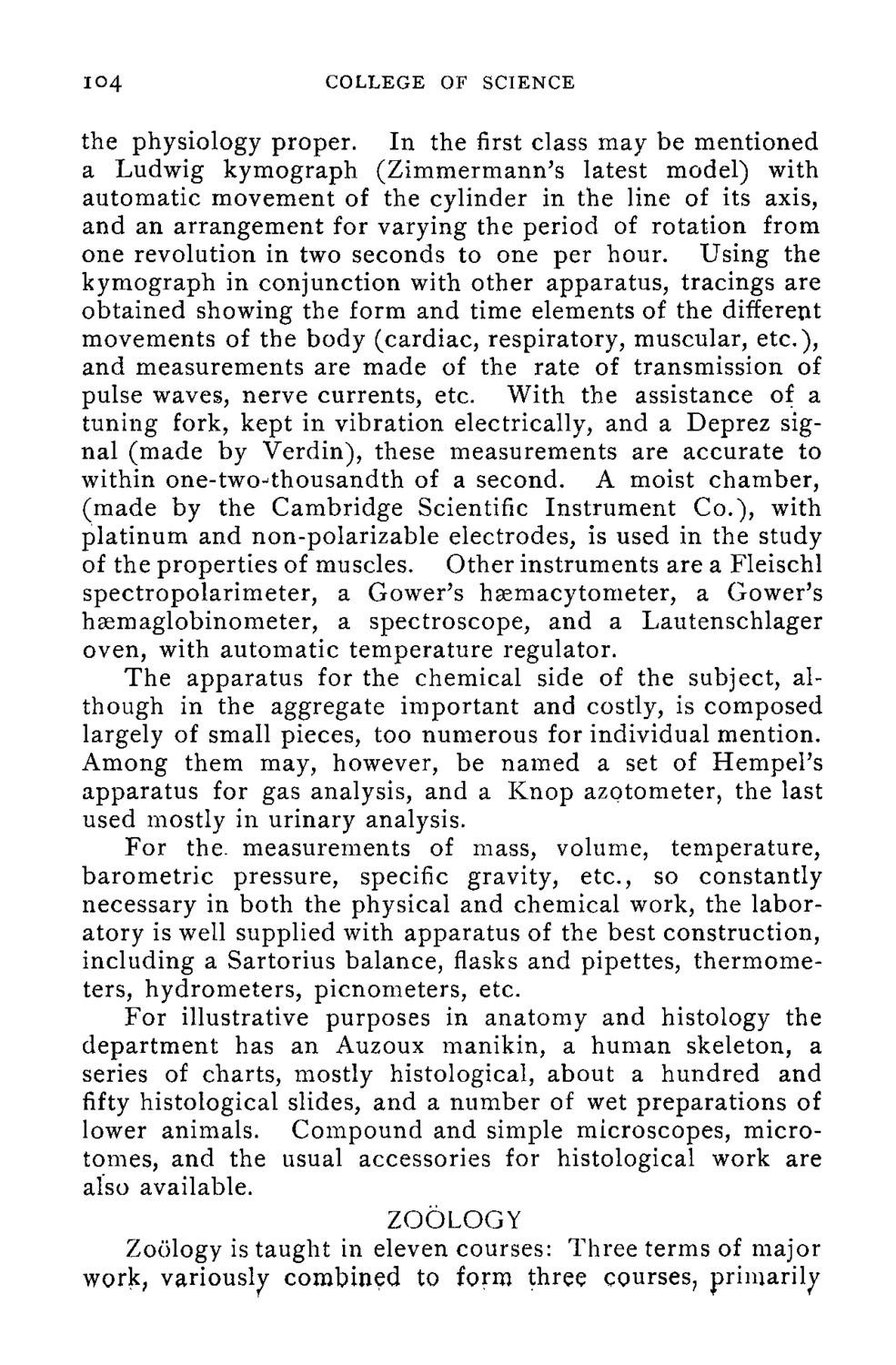| |
| |
Caption: Course Catalog - 1896-1897
This is a reduced-resolution page image for fast online browsing.

EXTRACTED TEXT FROM PAGE:
IO4 COLLEGE OF SCIENCE the physiology proper. In the first class may be mentioned a Ludwig kymograph (Zimmermann's latest model) with automatic movement of the cylinder in the line of its axis, and an arrangement for varying the period of rotation from one revolution in two seconds to one per hour. Using the kymograph in conjunction with other apparatus, tracings are obtained showing the form and time elements of the different movements of the body (cardiac, respiratory, muscular, etc.), and measurements are made of the rate of transmission of pulse waves, nerve currents, etc. With the assistance of a tuning fork, kept in vibration electrically, and a Deprez signal (made by Verdin), these measurements are accurate to within one-two-thousandth of a second. A moist chamber, (made by the Cambridge Scientific Instrument Co.), with platinum and non-polarizable electrodes, is used in the study of the properties of muscles. Other instruments are a Fleischl spectropolarimeter, a Gower's hsemacytometer, a Gower's hsemaglobinometer, a spectroscope, and a Lautenschlager oven, with automatic temperature regulator. The apparatus for the chemical side of the subject, although in the aggregate important and costly, is composed largely of small pieces, too numerous for individual mention. Among them may, however, be named a set of Hempel's apparatus for gas analysis, and a Knop azotometer, the last used mostly in urinary analysis. For the. measurements of mass, volume, temperature, barometric pressure, specific gravity, etc., so constantly necessary in both the physical and chemical work, the laboratory is well supplied with apparatus of the best construction, including a Sartorius balance, flasks and pipettes, thermometers, hydrometers, picnometers, etc. For illustrative purposes in anatomy and histology the department has an Auzoux manikin, a human skeleton, a series of charts, mostly histological, about a hundred and fifty histological slides, and a number of wet preparations of lower animals. Compound and simple microscopes, microtomes, and the usual accessories for histological work are also available. ZOOLOGY Zoology is taught in eleven courses: Three terms of major work, variously combined to form three courses, primarily
| |